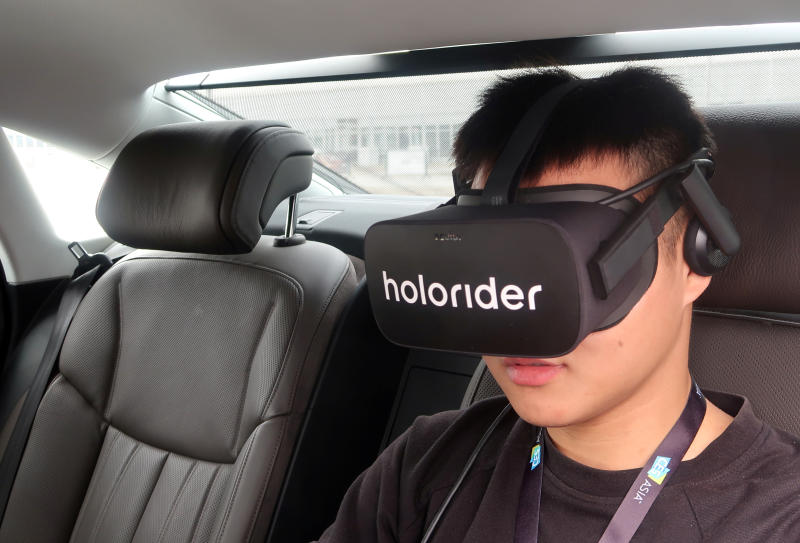Carmakers tap virtual reality to keep driver and passengers awake in autonomous cars
Sign up now: Get insights on Asia's fast-moving developments

Start-up holoride, co-founded by an Audi subsidiary, wants to turn road trips into virtual reality experiences, allowing passengers to swim with whales or through sunken ships in the deep sea while on a drive.
PHOTO: REUTERS
Follow topic:
SHANGHAI (REUTERS) - Audi, Nissan and other car makers are banking on talking cartoon characters and other virtual reality experiences to keep drivers and other occupants of future autonomous vehicles entertained, car industry executives said.
Carmakers have long focused on getting drivers to sit tight and pay attention to the road. Now, as the industry moves to self-driving cars and drivers become passengers, they face a new problem: how to tackle passengers' boredom?
"Once customers do not need to drive anymore... then the question is what kind of things can we offer to customers inside this car," Mr Boris Meiners, senior director of Audi China's Digital Business and Customer Experience, told Reuters on the sidelines of the CES Asia technology tradeshow in Shanghai this week.
Start-up holoride, co-founded by an Audi subsidiary, for example, demonstrated at the show how it wants to turn road trips into virtual reality (VR) experiences, allowing passengers to swim with whales or through sunken ships in the deep sea while on a drive.
As the car accelerates or steers sideways, the movements are logged by a computer installed in the car's trunk which adjusts the passenger's view in the VR goggles accordingly. It also prevents the passenger from experiencing motion sickness.
Japanese carmaker Nissan showcased a set of goggles for drivers and passengers which could deliver real-time information and project a talking cartoon character which communicates with the wearer.
"We want to fulfil people's emotional needs," said Mr Tetsuro Ueda, expert leader at the Nissan Research Centre.
"Rather than the driver, we want to focus on the riding experience for all passengers, including the driver. Because when it comes to the stage of autonomous driving, the driver's control is less and less, and the interaction with the surrounding passengers is increasing," Mr Ueda said.
Other global car makers, large technology companies and start-ups which are pouring capital into developing self-driving vehicles include Tesla, Alphabet's Waymo, and Uber Technologies.
While studies show that it will take time for the public to trust riding in fully autonomous vehicles, companies say they need to start investing in anticipation that the vehicles would eventually catch on.
Audi's Mr Meiners and Nissan's Mr Ueda said the virtual experiences that their companies are developing would likely only be deployed when the industry reaches "Level 4", or fully autonomous standards, in which the car can handle all aspects of driving in most circumstances with no human intervention.
"Many engineers are not confident about the rapid implementation of self-driving technology. So these virtual reality attempts may not come soon," said Mr Yale Zhang, head of Shanghai-based consultancy Automotive Foresight.
Nonetheless, such innovations were popular with attendees at the CES Asia show, attracting the likes of Mr Gao Liang, a 25-year-old engineer who played a game in a Mercedes-Benz car that simulated a self-driving vehicle.
"It is so exciting to play a car racing game in a running vehicle," said Mr Gao, who had just finished the game in the car that shot out air based on the speed and direction of his car's placement in the game.

